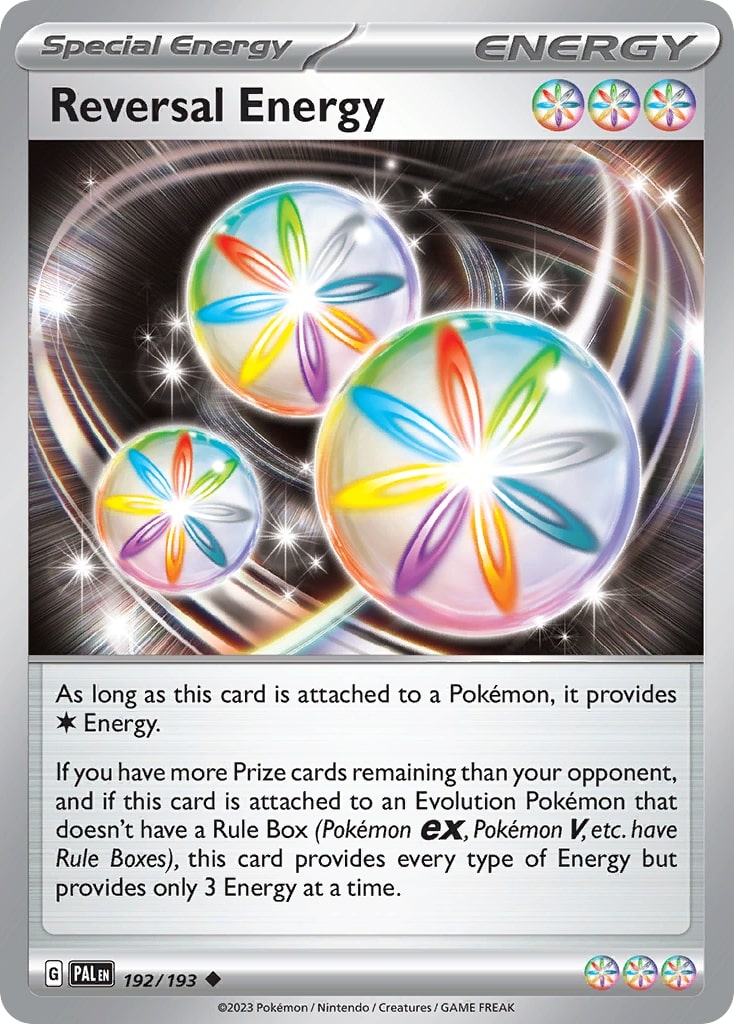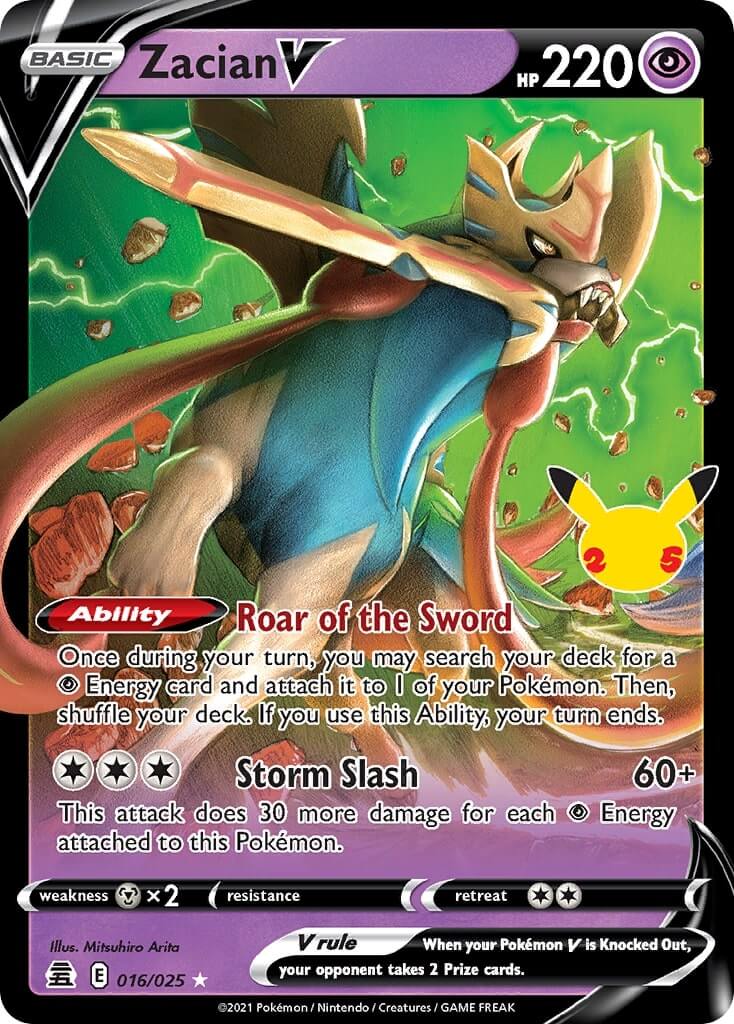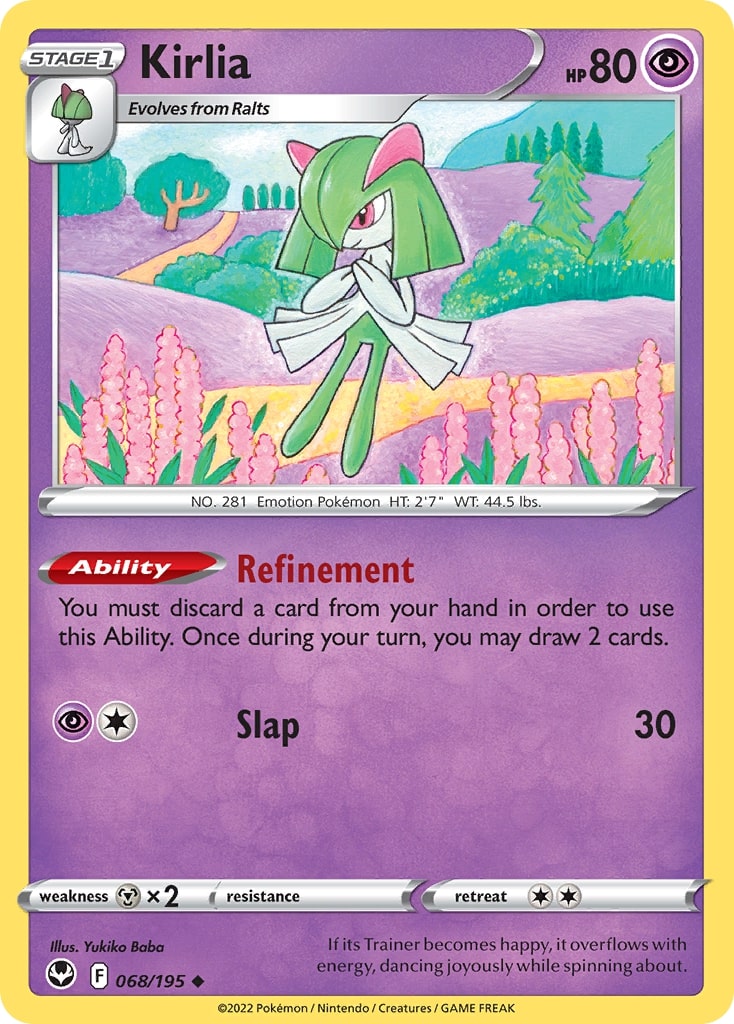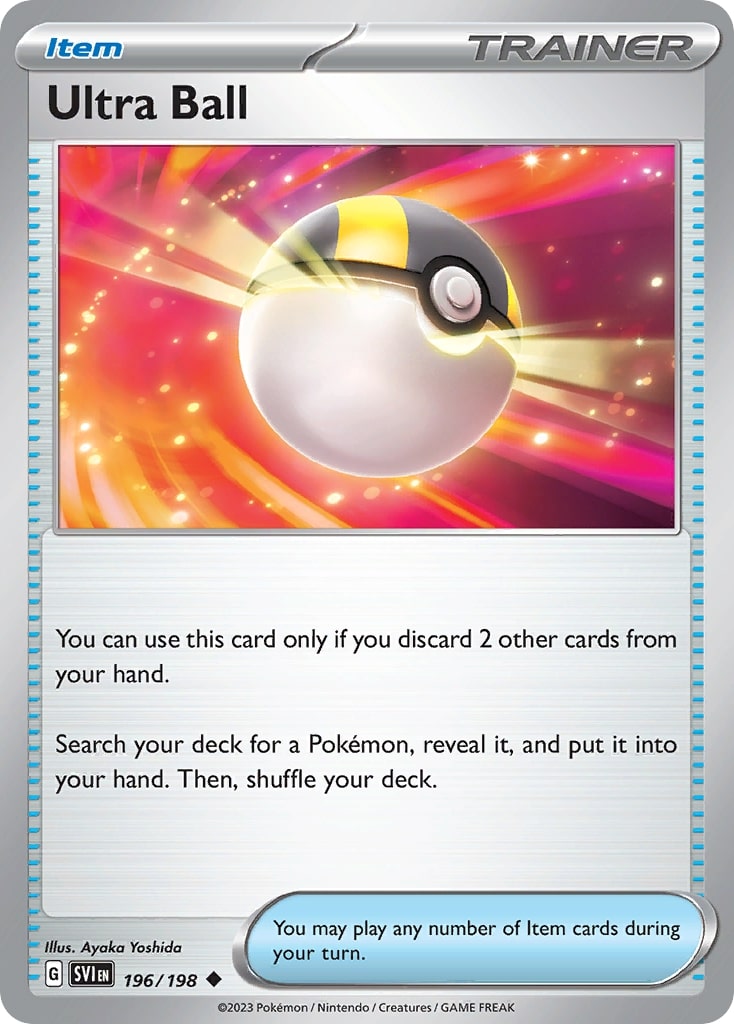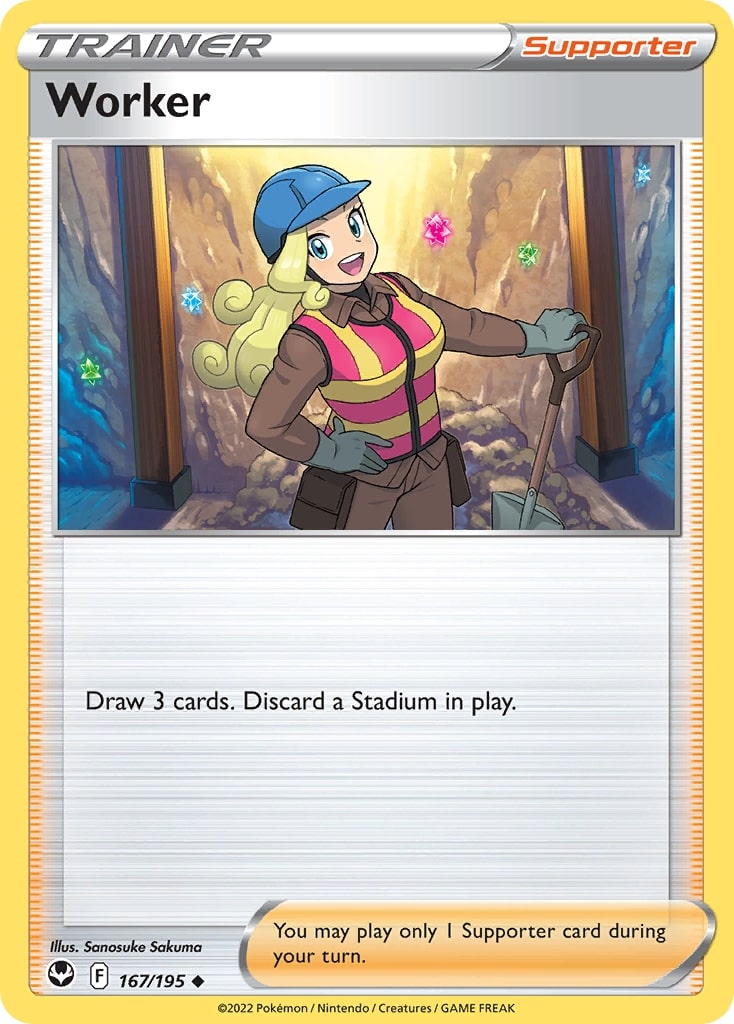Here’s a small trip through memory lane! Before COVID interrupted the 2019-2020 season, I was ranked number 1 in Europe and had an incredible season, including two top 8 at Cologne and Malmö Regionals, and a win at Bochum Regionals. I’ve realised that an important reason for that success was that I had the opportunity to play a lot of League Cups, which are very good training for big events because players are motivated to do their best. Also, importantly, I used that opportunity to try many different decks. It’s not like I was going out of my way to play random things, but I did alternate between multiple decks each format, depending on the ideas I wanted to test and the metagame I expected. I believe that using several decks in competitive environments, rather than sticking to one, allowed me to get a better understanding of the metagame’s intricacies, and made me better prepared to pick the best possible deck for major events.
I mention this because I’ve been playing Giratina VSTAR almost exclusively since July, and I recently realized that, while I’ve had a lot of success with it at local events, I’ve become a bit too reliant on this deck. That’s why I decided to branch out and try mastering other decks. I tried various Gardevoir ex lists to see which one I liked most, since the metagame has been more friendly to that deck recently (less Path to the Peak, few direct counters). I also picked up Mew VMAX, which is a deck that I’ve avoided for a long time, without necessarily having a good reason for it. In the French community, I had a bit of a reputation for being a Mew VMAX hater due to losing to it in the finals of both the Bilbao SPE and Liverpool Regionals last season, and I think wanting to stick to that image held me back. Mew VMAX is an enjoyable deck to play, and I think that people are less inclined to tech against it these days, so I picked it up for a League Cup and a couple of Challenges and did alright with it.
I still decided to play Giratina VSTAR at the Barcelona SPE though, because I expected a rise in Charizard ex’s popularity. I think I was right, and while I didn’t end up making day 2, that was due to an unfortunate couple of ties which could have been avoided if I’d scooped a game a little faster to have more time for game 3. In any case, having a wider portfolio of decks has made be more confident, so if you’ve been playing a deck for a long time and find yourself in a bit of a slump, I really recommend trying out a different deck, see the game from a different perspective. Maybe you’ll end up liking that new deck better, maybe you’ll go back to your first choice, but I think that experiencing a bit more of a format is a great way to become better at the game.
Yes, all that introduction was there to give that tip with proper context. Now that I’ve established that I’ve been focusing on decks other than Giratina in the last few weeks, though, I can subtly segue into my main topic: Gardevoir ex! While everyone has their own take on Gardevoir, there are two main decklists around, and I want to compare them so that, if you want to play Gardevoir, you can choose which one to play.
R
Tord’s decklist
The first is usually known as “Tord’s decklist”, due to, you guessed it, being played by Tord Reklev, who used it to make top 32 at the Pittsburgh Regionals and top 8 at the Barcelona SPE.
| Pokémon – 18 |
|---|
| 3 Ralts ASR 60 |
| 1 Ralts SIT 67 |
| 3 Kirlia SIT 68 |
| 1 Kirlia CRE 60 |
| 2 Gardevoir CRE 61 |
| 2 Gardevoir ex SVI 86 |
| 1 Cresselia LOR 74 |
| 1 Mew CEL 11 |
| 1 Radiant Greninja ASR 46 |
| 1 Lumineon V BRS 40 |
| 1 Zacian V CEL 16 |
| 1 Manaphy BRS 41 |
| Trainer Cards – 30 |
|---|
| 3 Iono PAL 185 |
| 2 Boss’s Orders PAL 172 |
| 1 Professor’s Research SVI 189 |
| 1 Worker SIT 167 |
| 4 Battle VIP Pass FST 225 |
| 4 Level Ball BST 129 |
| 3 Ultra Ball SVI 196 |
| 3 Rare Candy SVI 191 |
| 2 Fog Crystal CRE 140 |
| 2 Super Rod PAL 188 |
| 1 Pal Pad SVI 182 |
| 1 Lost Vacuum CRZ 135 |
| 1 Forest Seal Stone SIT 156 |
| 1 Collapsed Stadium BRS 137 |
| 1 Artazon PAL 171 |
| Energy – 12 |
|---|
| 10 Psychic Energy |
| 2 Reversal Energy PAL 192 |
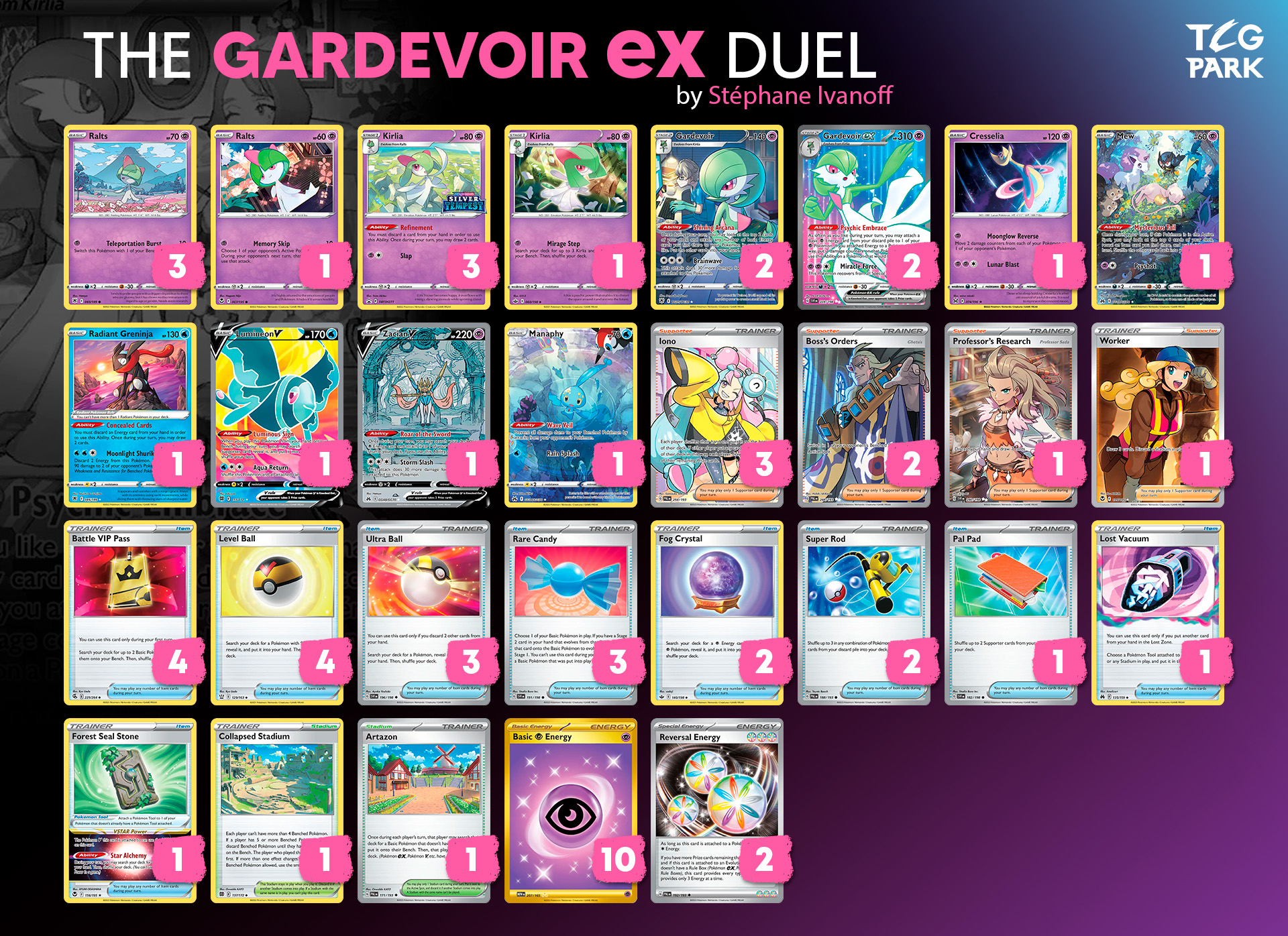
Note that this is only one card off the list that Tord played at the World Championships, where he got second place. The only change was adding in a Worker instead of the second Professor’s Research, which seems necessary with the addition of more Path to the Peak in the metagame (both Giratina VSTAR and Miraidon ex have been known to play up to four Path to the Peak).
The Australian decklist
The second list is (my take on) Unionised Gardevoir, also known as the Australian list, built mostly by Brent Tonisson and played by himself and other Australian players such as Natalie Millar, Matthew Burris and James Cox at NAIC, Worlds, and in online events. This version is characterised by a higher amount of Worker, double Zacian V, and no Reversal Energy. The list below is my own take on the deck:
| Pokémon – 18 |
|---|
| 3 Ralts ASR 60 |
| 1 Ralts SVI 84 |
| 4 Kirlia SIT 68 |
| 2 Gardevoir ex SVI 86 |
| 2 Gardevoir CRE 61 |
| 2 Zacian V CEL 16 |
| 1 Cresselia LOR 74 |
| 1 Mew CEL 11 |
| 1 Radiant Greninja ASR 46 |
| 1 Manaphy BRS 41 |
| Trainer Cards – 30 |
|---|
| 4 Iono PAL 185 |
| 3 Worker SIT 167 |
| 2 Boss’s Orders PAL 172 |
| 4 Battle VIP Pass FST 225 |
| 4 Level Ball BST 129 |
| 3 Fog Crystal CRE 140 |
| 2 Ultra Ball SVI 196 |
| 2 Rare Candy SVI 191 |
| 2 Super Rod PAL 188 |
| 1 Forest Seal Stone SIT 156 |
| 1 Emergency Jelly SIT 155 |
| 1 Collapsed Stadium BRS 137 |
| 1 Town Store OBF 196 |
| Energy – 12 |
|---|
| 12 Psychic Energy |
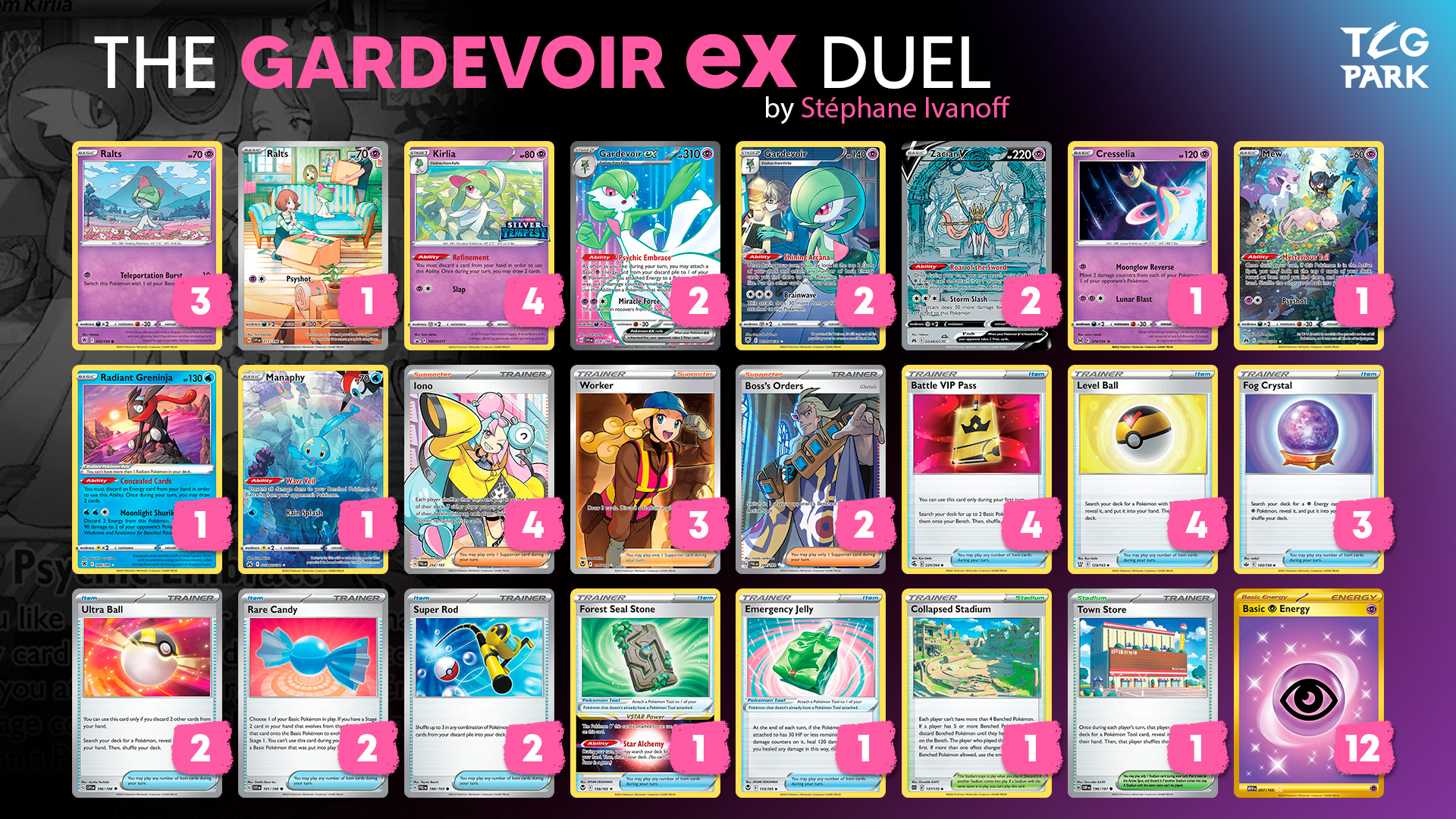
As stated above, the core of this list came from the Australian players; my own contributions are the inclusion of Emergency Jelly and Town Store over the second Collapsed Stadium and Forest Seal Stone.
A comparison
I want to be clear that both lists have their merits. My intention is absolutely not to claim that my deck is better than Tord’s, but simply to bring your attention to the pros and cons of each variation. Generally speaking, Tord’s list is stronger against Mew and Charizard, while the Australian list performs better against Lost Box and Giratina. Tord’s list also has the edge in the mirror match. Let me explain a bit better the reasoning behind the differences in the decklists:
Reversal Energy vs no Reversal Energy: Here’s the core of where the lists differ. Tord’s list plays Reversal Energy, which is extremely strong. With Reversal Energy and six Energy attached through Psychic Embrace, Gardevoir CRE can deal 330 damage, which gets a KO on any Pokémon, even high HP behemoths like Charizard ex and Mew VMAX (hence why Tord’s list is better in these matchups). Reversal Energy can also be used to simply deal 150 damage without having to damage your Gardevoir, which is strong against Lost Box. However, since there’s no way to search for it (except Forest Seal Stone), Reversal Energy is a bit less consistent. There may be situations in which you have to discard Reversal Energy to Concealed Cards, where it can’t be recovered. By contrast, the Australian list plays only Psychic Energy, so it is more consistent in that regard.
1 Zacian V vs 2 Zacian V: If you play Reversal Energy, then Gardevoir is going to be your main attacker. Obviously, having a one-Prize Pokémon that can trade with an opponent’s two-Prize Pokémon is fantastic, but it also means that you may miss on crucial KOs if you commit to Gardevoir but don’t draw the Reversal Energy when needed. Instead, the Australian list plays two Zacian V, which can make better use out of the higher amount of Psychic Energy. Gardevoir is still a highly used attacker, though, but it requires a bit more preparation. For example, against 280 HP Pokémon like Lugia VSTAR, you want to have an Energy in play on Gardevoir before the turn you attack with it, so that you can reach eight Energy in one turn (when adding in the attachment for the turn and six uses of Psychic Embrace) and deal 300 damage. Instead of a prior attachment, you can also get lucky with Shining Arcana: with more Energy in the deck, your chances to hit are higher.
Mirage Step Kirlia vs no Mirage Step Kirlia: Mirage Step Kirlia shines in lists with two Reversal Energy, because using Mirage Step requires you to, essentially, sacrifice a turn. With Reversal Energy, you can get the momentum back much faster; Knocking Out a big Pokémon with Gardevoir the turn after your Kirlia gets KO’d is much easier. However, playing this Kirlia means you have one fewer Refinement Kirlia, and that can hurt you in some situations. The Australian list is focused on consistency, so it favors having the fourth Refinement Kirlia more than the chance of saving a badly engaged game with Mirage Step.
3 Ultra Ball, 2 Fog Crystal vs 2 Ultra Ball, 3 Fog Crystal: It will come as no surprise that the list that’s more focused on Gardevoir plays more Ultra Ball, whereas the list that centers around Zacian V and needs more Psychic Energy plays more Fog Crystal! The original Australian list played at NAIC and Worlds actually played four Fog Crystal, but one has since been cut for a Worker. Speaking of which…
3 Worker vs 1 Worker, 1 Professor’s Research, 1 Pal Pad: The Australian list plays three Worker, which might sound surprising. But the idea is that Worker is actually a great card in Gardevoir ex: it removes Path to the Peak, which is one of the deck’s biggest enemies, and it draws cards at the same time (which makes it a great Roxanne+Path counter against Giratina). The “draw 3” effect is actually fairly good by itself in this deck! In Gardevoir, you keep drawing cards with Kirlia and Gardevoir’s Abilities (this is especially true in this variant which attacks more often with Zacian V, as Benched Kirlia and Gardevoir will be left untouched). Draw effects synergise well with each other, because if you already have a lot of cards in hand, you’d rather draw even more cards than get a new card with Iono. Therefore, it makes a lot of sense to play multiple Worker. And if you’re not playing Professor’s Research, you don’t need Pal Pad to recover resources.
1 Forest Seal Stone vs 2 Forest Seal Stone (or 1 FSS + 1 Town Store): Forest Seal Stone is not necessary in Gardevoir, but both lists play it. Tord’s list uses Lumineon V as a way to lose fewer games due to bad draws, and since there are two Pokémon V in the deck, Forest Seal Stone can be used. The Australian list also has two Zacian V and usually wants one in play, so it makes a lot of sense to play two Forest Seal Stone (or one and a Town Store, which can find Forest Seal Stone) to help with finding any important card. In particular, the Australian list plays only two Rare Candies. While it’s a great card in the early game, it’s also often a dead card for a long time as you want to evolve most of your Ralts into Kirlia during the game. Forest Seal Stone (or Town Store) provides additional outs to Rare Candy in the early game.
Town Store also allows you to get Emergency Jelly, which is a fantastic card against Lost Box and Giratina (and to a lesser extent, Rapid Strike Urshifu VMAX). Being able to KO a Giratina VSTAR with Gardevoir and stay at full health to avoid a Lost Mine return KO wins the matchup.
Going further
As much as there is to say about every minute difference between the lists, it’s also worth keeping in mind that there are even more options on how to play Gardevoir ex!
First, there’s the small matter of the Ralts split: I think that having one Ralts SVI among your 70 HP Ralts is actually optimal since dealing 30 damage can actually be good in the mirror match when your opponent is heavily damaged by Psychic Embrace. But the big question is: should you play Memory Skip Ralts? Its main use is to counter Alolan Vulpix VSTAR, which is now very rare. On the flip side, having 60 HP can be an issue in the mirror match, because Cresselia is more likely to Knock it Out on turn 2, and it’s also super risky against Rapid Strike Urshifu VMAX / Inteleon VMAX. That’s why I currently prefer using only 70 HP Ralts.
Also, for lists that don’t play three Worker, you need outs to Path to the Peak. Tord’s list plays Artazon, Collapsed Stadium, and Lost Vacuum, but other options include Temple of Sinnoh (mainly as a Lugia VSTAR counter), Pokémon League Headquarters (the best Stadium to protect yourself from Sableye in the late game, used by Juan Andree in his top 8 decklist from Curitiba Regionals), and Champions Festival, recently used by Fabien Pujol who got 9th place in Barcelona.
I don’t think the perfect Gardevoir list exists. There are too many cards that we’d like to include to fit in only sixty cards, so you always need to make choices and exclude some, but the search for the right sixty for each event is interesting. Hopefully this dissection of some possible choices can help you pick the right deck! And remember, you don’t need to choose one list over the other, some adjustments are possible: for example, playing a list with two Reversal Energy and multiple Worker.
You may have noticed that I haven’t mentioned a single card from 151 yet, and that’s because there’s none that fits in Gardevoir. (Cycling Road is the one that comes closest, I think, but it’s not good enough to justify playing.) But just because it gains nothing new doesn’t mean that the deck isn’t still great! The main issue plaguing Gardevoir is the newfound popularity of Charizard ex, especially given that the list that won Curitiba regionals plays Mawile, which is extremely frustrating to Gardevoir players. Charizard ex is a difficult matchup, so Gardevoir isn’t the best play right now. However, I think that Giratina VSTAR will soon rise again to punish Charizard players, at which point Gardevoir becomes a better option!
Thanks for reading! I’ve had a lot of trouble with TCG Live recently, so testing the 151 format hasn’t been easy, but I hope that I’ll soon be able to fix that and showcase some cool new cards.
Stéphane
